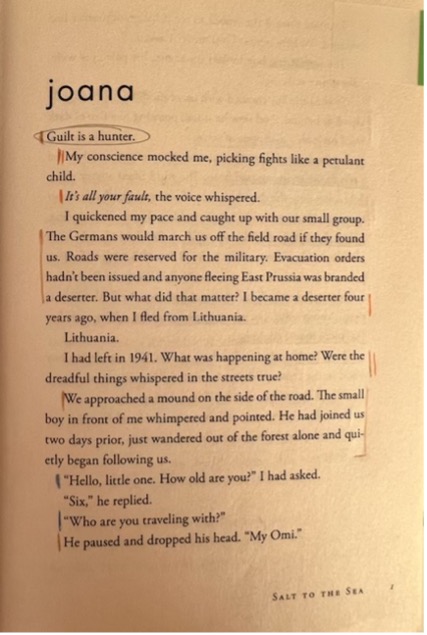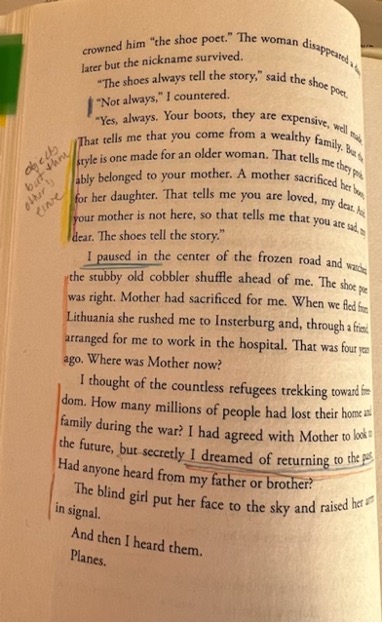When we work through the draft of our stories we often notice that our initial “list of traits” of character sketches is evolving and changing as we go. This prompted me to take a closer look at Sarah Stone’s chapter on character development in DEEPENING FICTION. Stone recommends approaching “list-making in a dreamy, waiting mode, not ‘making things up’, but listening for answers that come in their own time” as we write and essentially “tell” ourselves the story on paper in the early drafting process. Stone distinguishes the following essential parts of rendering three-dimensional characters on the page:
- Physical sensations or appearance
- Thoughts
- Background
- Objects, places that reveal character information
- Character’s actions
- Character’s pattern of speech/dialogue
- Direct comments by the narrator
She suggests using colored highlighters for each of those categories and examining a mentor text for the aforementioned to see how much character information our favorite writers include and when and how they introduce it. For this exercise, I chose Ruta Sepetys’ SALT TO THE SEA. I focused on the first couple of chapters on Joana, the main character in this ensemble cast, and Florian, her love interest.
For my analysis, I added one more detail to the fourth category: the way characters perceive objects and places which I felt was slightly different from perhaps direct comments of such by the narrator which may or may not be the POV character for example.
The visuals are included below. What struck me with this exercise was that the categorization wasn’t as clean-cut as I expected. As you can see in the image I found that categories overlapped. A sentence reveals background via objects, and/or physical or emotional sensations. Seeing it color-coded on the page added a new level of insight. It is also interesting how the direct narration in a first POV character can (to an extent) pull back to insert less filtered, to a degree objective, information just like an omniscient character could.
Try this exercise and explore how it may serve your writing. How can you be more meticulous in the choices of how and when to reveal character information?



